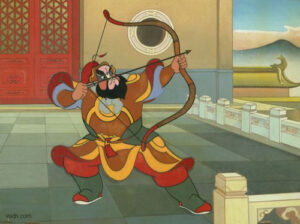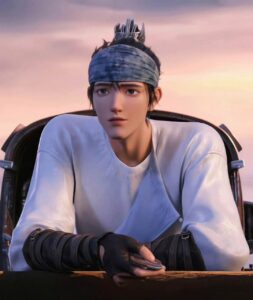The Relationship Between Traditional Clothing Culture and Animation Character Shaping In China
https://www.imdb.com/search/title/?title_type=feature&genres=animation
http://The Relationship Between Traditional Clothing Culture
The development of Chinese animated films has always adhered to the inheritance and development of traditional culture. Among them, clothing culture, as an essential part of Chinese classical culture and animated films, plays an important role in the domestic animated films. Because clothing will give the audience the most intuitive feeling and cultural presentation, and also the most explicit expression of the main idea of the film content. The audience will have the most preliminary understanding of the necessary content such as the character’s personality, status, living environment, background experience, etc. directly from the clothing and matching of the film characters.so as to have a great impact on the overall style and scene construction design of the film and the character shaping of the film.
From the 1940s and 1950s to the 1990s
With the launch of Asia’s first animated feature film Iron Fan Princess in 1941. Domestic animated films entered the development stage of creation and exploration. The animated films of this period focus on restoring the inherent characters in myths and legends or historical books. They are good at applying a certain kind of traditional culture as a whole to the content and form of animation. Clothing is also included, but it lacks innovative content, resulting in similarity of clothing. For example, in 1956, “The Proud General” completely used the elements of the face of Peking Opera to shape the characters, while “Iron Fan Princess” and later “Golden Conch” used traditional Chinese folk paper-cut art to interpret the characters’ dynamics. The launch of The

Heavenly Palace in 1964 marked the maturity of the national style of Chinese animation. Until the early 21st century, Chinese animated films have maintained such a national style. While the national character is becoming more and more mature, Chinese animated films are also facing the transformation of modernization. The reason for the lack of modernization and innovation may come from the simplicity of most of the story content and plot content. People’s general focus is also on the presentation of the overall national characteristics of the film, rather than the uniqueness of the characters. However, the attempt of domestic animated films in this period on various traditional cultural methods is the rapid development of “Chinese comics” in the later period laid a solid foundation. And character shaping can bring strong memory points to the audience.
From the 1990s to the 1910s
Chinese animated films developed slowly and entered the exploration stage in urgent need of transformation. At the same time, due to the large number of introductions of animation from Europe, the United States and Japan during this period. From the release of Journey to the We
st: The Return of the Great Sage in 2015. Chinese animated films have entered a new stage from the adaptation of content to the innovative application of clothing elements. They only retain the most core cultural connotations and values, as well as the most profound symbolic elements that can reflect the identity of the characters. The clothing culture of this period is more closely related to the animated characters and is irreplaceable. Clothing elements begin to transform from just expressing the identity of characters to deeper metaphors. And the clothing elements that can play a role have also expanded from style to more detailed aspects. Such as material, color, pattern, graphic and so on. These contents can determine whether a character is successful. Therefore, whether the clothing culture is reasonably used is one of the necessary conditions for a good animated film.

